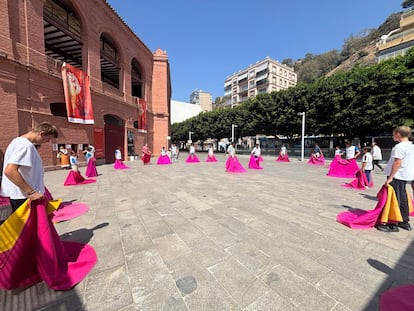Businessman José María Garzón, committed to involving society in bullfighting

A new way of experiencing bullfighting is the central slogan of a bullfighting advertisement that has appeared on Antena 3, Telecinco, Canal Sur, and Telemadrid from May to July. The company behind the idea is Lances de Futuro, led by José María Garzón (Seville, 52), who says he is committed to involving society in bullfighting.
"I believe we have achieved our goal: to showcase bullfighting in prime time nationwide as a unique and truthful experience, experienced through the most traditional emotions and feelings; we have invited viewers to experience the inexplicable passion that bullfighting ignites," the entrepreneur says.
The 15-second commercial—which has been viewed by more than 48 million viewers, according to the company—is a mosaic of exciting images of some of the most famous bullfighting figures in different moments of the fight, and aims to explain that Lances de Futuro is “the new way of experiencing bullfighting.”
"I think we've managed to show bullfighting as a unique experience, full of truth."
And perhaps he's right, as the Seville-based businessman has spent years trying to establish various initiatives to attract visitors to the seven top-class venues he manages: Córdoba and Málaga; Santander, Cáceres, Almería, Torrejón de Ardoz, and Écija.
The latest and most surprising was the bullfighting television commercial. "No one had dared to do something like this before," says Garzón, "and we had to take a step forward for the festival, so that the public could see bullfighting in a natural way at home."
The advertisement couldn't be shown on TVE because the entrepreneur himself decided so—"it's a public television station that's decided to forget about bullfighting"—and because "there wasn't enough money for everyone." "The investment has been very significant," he continues, "and don't think about 30, 40, or 50,000 euros, much more, although I won't give specific figures."
This advertising is part of a long list of activities—organizing events, award ceremonies, colloquia, master classes in indoor bullfighting, meetings between bullfighters and students from bullfighting schools, competitions, painting exhibitions, advertising promotion on city buses, campaigns in nearby towns, etc.—which, in the entrepreneur's opinion, are profitable through attendance at bullfights.
This is what happened at the recent Santander fair, which Garzón dares to describe as "historic" due to the success with the public—three afternoons with no tickets , two sold-out crowds, and good attendance in a series of eight events—the special turnout of young people, and the triumph of some bulls and bullfighters. "I'm happy because of the good atmosphere we experienced in the city. I think Santander has established itself as the great fair of the north," he concludes.

Furthermore, he acknowledges that the company has made a profit, "taking into account," he points out, "that both Santander and Malaga are very cheap locations."
Garzón is confident that a similar result will be achieved in the capital of Málaga in his final year as an entrepreneur, as the Provincial Council, which owns the bullring, has decided not to grant him a one-year extension. A fair is scheduled for August 14-21 with the same number of events: six bullfights, a bullfighting show, and a bullfight with novilladas. Among those participating will be Morante and Fortes, with two afternoons; Roca Rey, Juan Ortega, Pablo Aguado, Diego Ventura, Borja Jiménez; Víctor Hernández, who is making his comeback after the serious head injury he suffered on June 21 in the Torrejón de Ardoz bullring; and Pepe Moral and David de Miranda, winners of the last April Fair.
Finally, Garzón insists that the only trick "lies in constant work and involvement in the city throughout the year; only then is profitability possible." "I make a profit, which isn't crazy, but it is positive."
EL PAÍS




%3Aformat(jpg)%3Aquality(99)%3Awatermark(f.elconfidencial.com%2Ffile%2Fbae%2Feea%2Ffde%2Fbaeeeafde1b3229287b0c008f7602058.png%2C0%2C275%2C1)%2Ff.elconfidencial.com%2Foriginal%2Fa5b%2F394%2F5aa%2Fa5b3945aa110671aff3d8d4c0b14f7ed.jpg&w=3840&q=100)